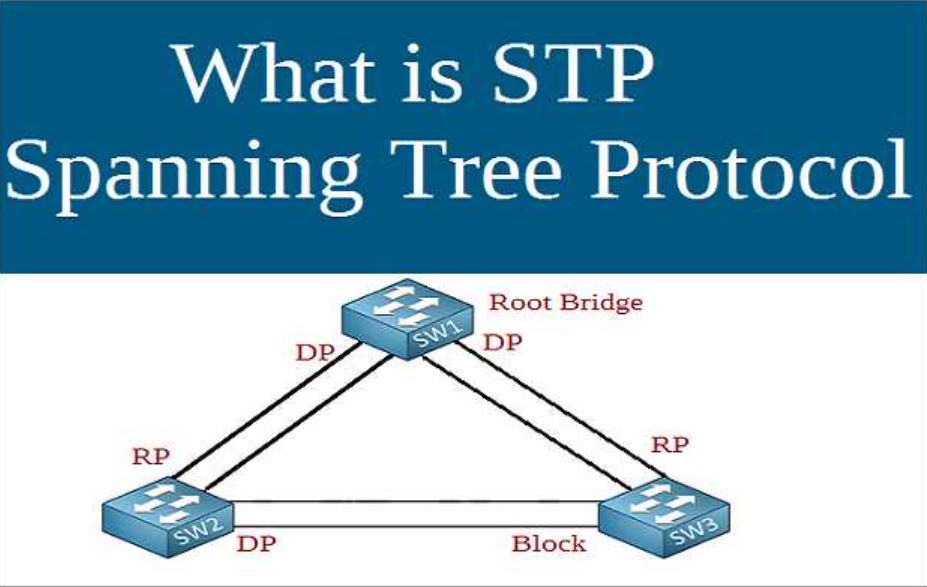In the realm of networking, the Spanning Tree Protocol (STP) stands as a fundamental mechanism ensuring robust and loop-free network topologies. Developed by Radia Perlman in the 1980s, STP is essential for preventing broadcast storms, which can cripple a network. This article delves into the intricacies of STP, shedding light on its purpose, operation, and significance.
What is Spanning Tree Protocol (STP)?
Spanning Tree Protocol is a network protocol that ensures a loop-free topology for Ethernet networks. It was standardized as IEEE 802.1D. The primary function of STP is to prevent bridge loops and the broadcast radiation that results from them. In simpler terms, STP keeps the network from becoming overwhelmed by repeated data frames, ensuring data flows smoothly from one point to another without redundancy.
Why is STP Necessary?
In a network, multiple paths between switches can create a loop. Without STP, these loops can cause significant issues such as broadcast storms, multiple frame copies, and MAC table instability. Broadcast storms occur when broadcast frames are endlessly circulated in the network, consuming all available bandwidth and bringing network operations to a halt.
For instance, imagine a network with three switches connected in a triangle. If a broadcast frame is sent, it would circulate indefinitely between the switches. This scenario underscores the need for a protocol that can intelligently disable some paths and prevent loops, which is precisely what STP does.
How Does STP Work?
STP works by creating a tree structure of the network, with a single root bridge at the top and all other switches branching out from it. Here’s a step-by-step breakdown of STP’s operation:
1. Root Bridge Election
The first step in STP’s operation is the election of the root bridge. This is the central reference point of the network. Each switch has a unique Bridge ID (BID), comprising a priority value and the switch’s MAC address. The switch with the lowest BID becomes the root bridge. By default, all switches have the same priority, so the switch with the lowest MAC address is chosen as the root bridge.
2. Path Cost Calculation
Once the root bridge is elected, each switch calculates the shortest path to the root bridge. The path cost is determined by the speed of the links; higher speed links have lower costs. The goal is to ensure that data takes the most efficient route to the root bridge.
3. Designated and Non-Designated Ports
STP then assigns roles to the ports on each switch. The ports closest to the root bridge become designated ports, responsible for forwarding traffic towards and from the root bridge. Non-designated ports, on the other hand, are placed in a blocking state to prevent loops. These ports do not forward traffic but listen for Bridge Protocol Data Units (BPDUs) to ensure network topology changes are detected.
4. Port States
Ports in STP can exist in several states:
Blocking: The port does not participate in frame forwarding and only listens to BPDUs. This state prevents loops.
Listening: The port listens to BPDUs to ensure there are no loops before transitioning to the learning state.
Learning: The port begins to learn MAC addresses but does not forward frames.
Forwarding: The port forwards frames and learns MAC addresses.
Disabled: The port is administratively down and does not participate in STP.
5.Topology Changes
When network changes occur, such as a switch or link failure, STP dynamically recalculates the best path to the root bridge. This involves re-electing designated and non-designated ports and transitioning ports through the various states to ensure a loop-free topology is maintained.
Enhancements to STP
While STP is effective, it has some limitations, such as slow convergence times during topology changes. To address these issues, several enhancements and variations of STP have been developed:
Rapid Spanning Tree Protocol (RSTP)
RSTP (IEEE 802.1w) is an evolution of STP, offering faster convergence times. It reduces the time it takes for the network to adapt to changes from 30-50 seconds in STP to a few milliseconds. RSTP achieves this through better management of port states and quicker transitions.
Multiple Spanning Tree Protocol (MSTP)
MSTP (IEEE 802.1s) allows for multiple spanning trees within a single network. This means different VLANs can have different logical topologies, optimizing the network paths and improving redundancy and load balancing.
Per-VLAN Spanning Tree Protocol (PVST and PVST+)
PVST and PVST+ are Cisco enhancements to STP that allow each VLAN to have its own spanning tree instance. This provides greater flexibility and efficiency in managing VLAN traffic and improves fault tolerance and load balancing.
Best Practices for Implementing STP
To ensure optimal performance and reliability when implementing STP, consider the following best practices:
Set Bridge Priorities: Manually set bridge priorities to control which switch becomes the root bridge, ensuring it is a high-capacity, centrally-located switch.
Enable RSTP: Use Rapid Spanning Tree Protocol for faster convergence times and improved network resilience.
Use PortFast: Enable PortFast on ports connected to end devices to skip the listening and learning states, allowing for immediate forwarding.
BPDU Guard: Enable BPDU Guard on PortFast-enabled ports to protect against accidental or malicious BPDU transmissions that could disrupt the network topology.
Regular Monitoring: Regularly monitor network performance and STP status to quickly identify and address potential issues.
Conclusion
The Spanning Tree Protocol is a cornerstone of modern Ethernet networks, preventing the disastrous effects of network loops and ensuring efficient data flow. Understanding how STP operates and implementing best practices can significantly enhance network reliability and performance. By leveraging STP and its enhancements like RSTP, MSTP, and PVST, network administrators can create robust, loop-free network topologies that are resilient to changes and failures.
For More Articles Click


